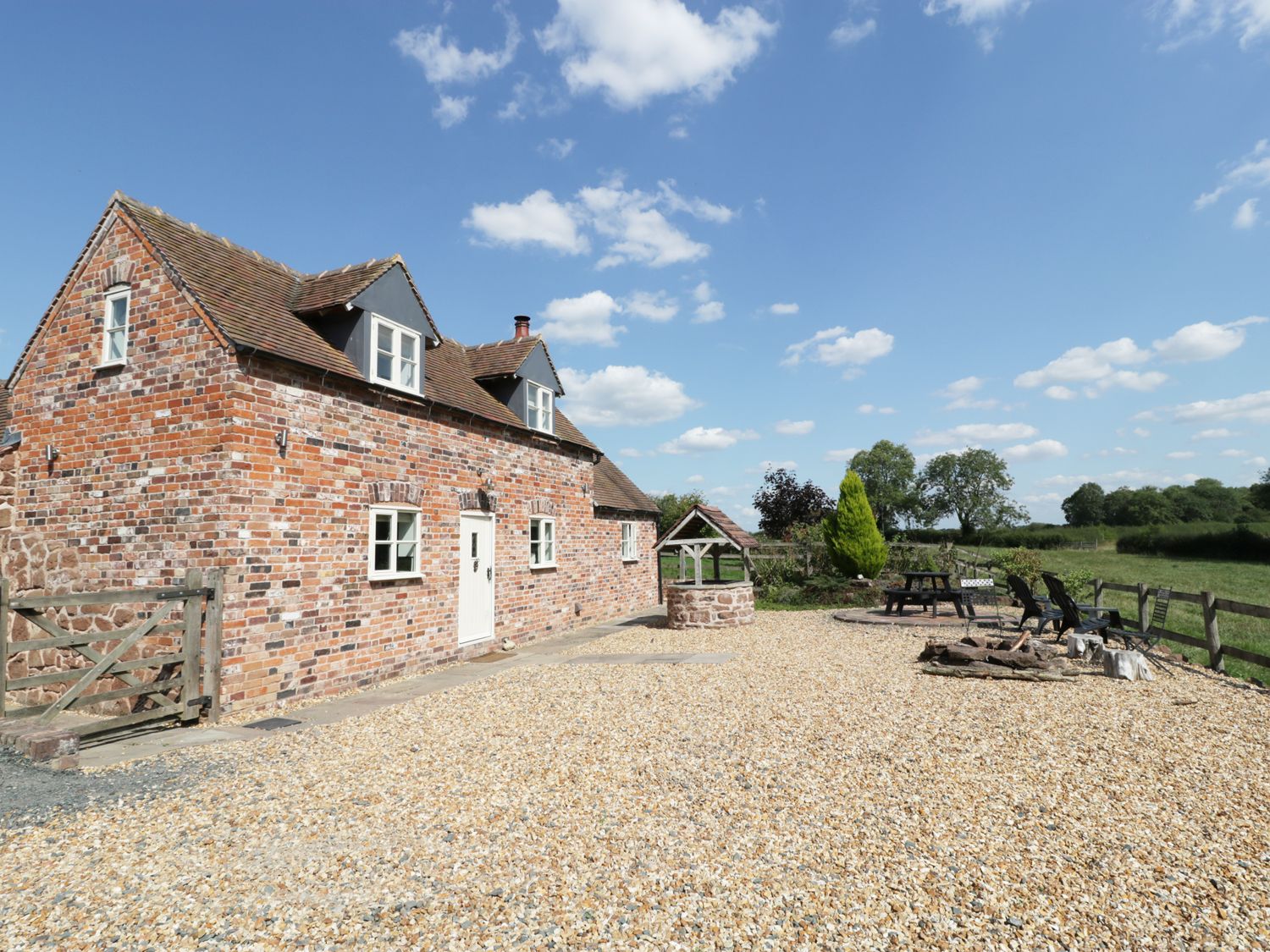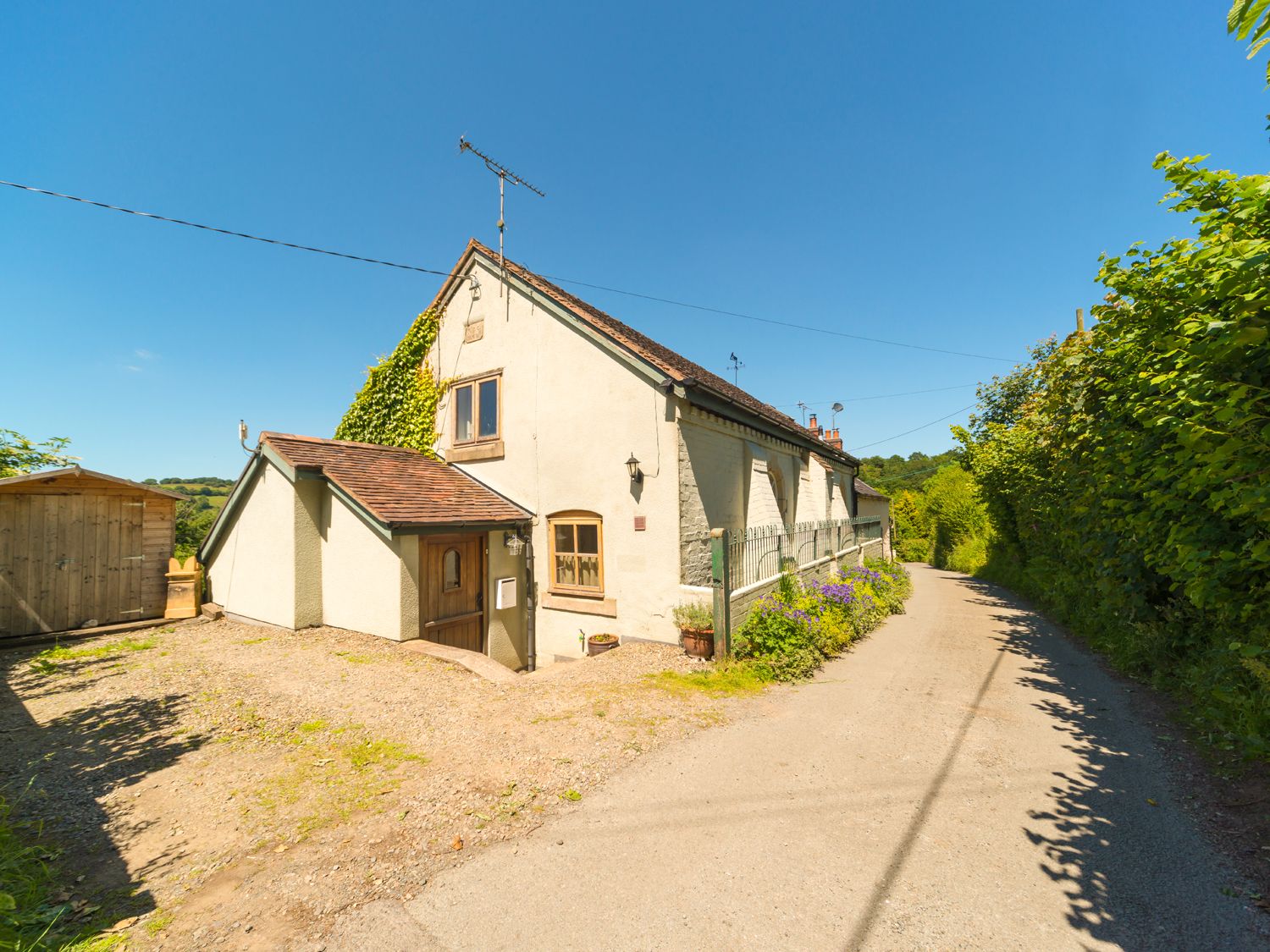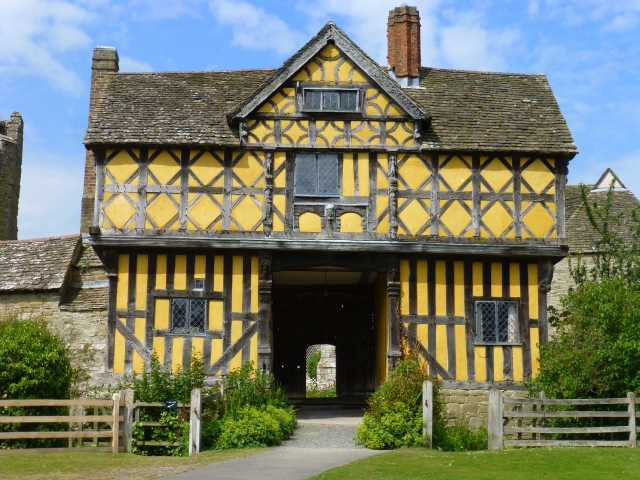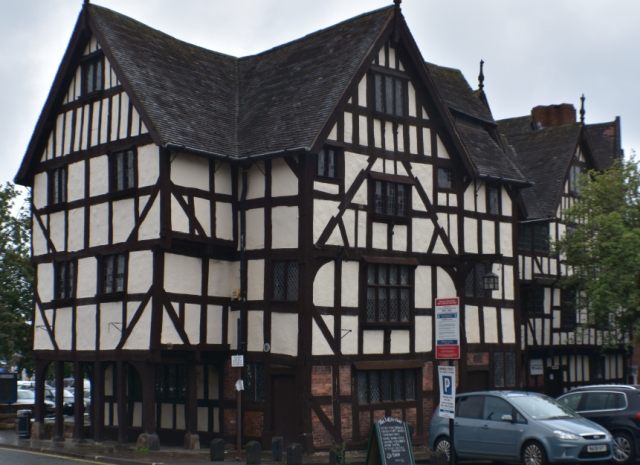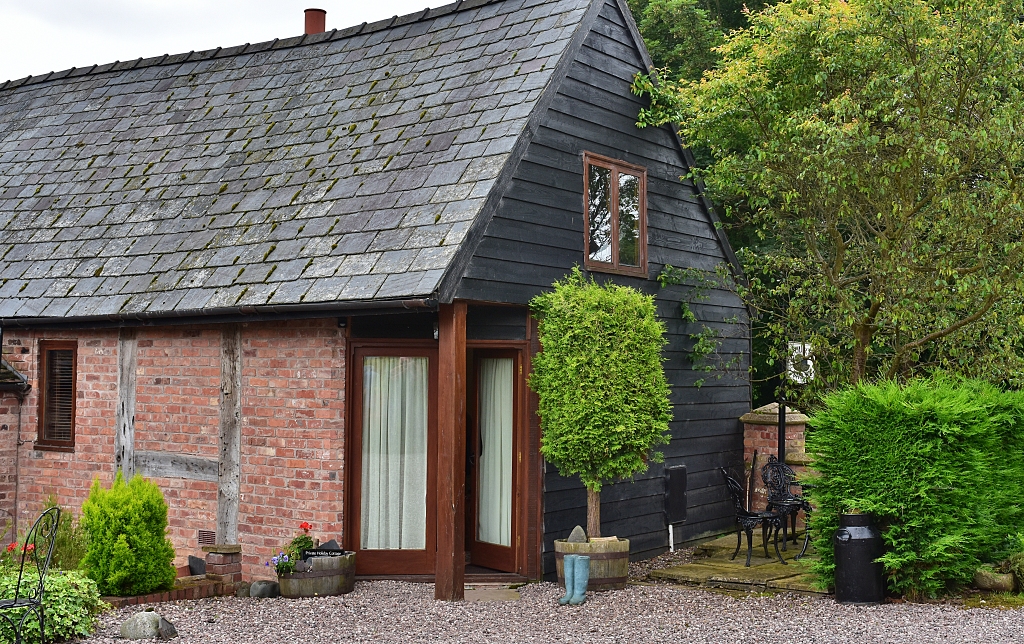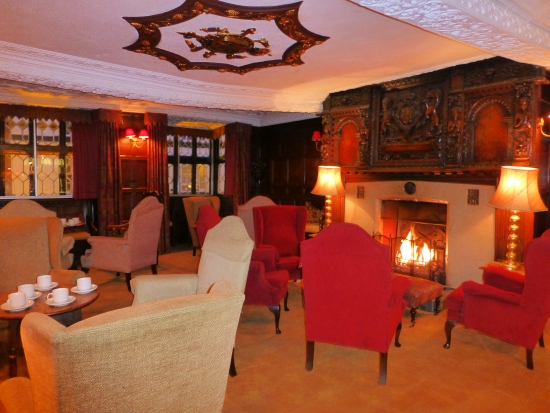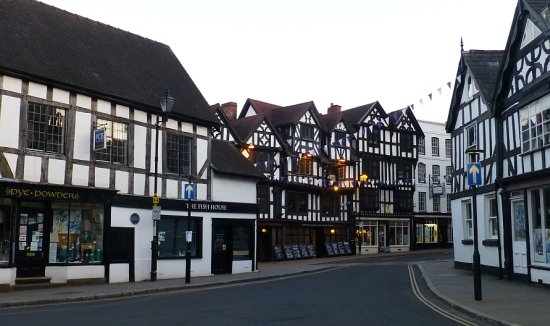The Iron Bridge
Symbol of the Industrial Revolution
The majestic Iron Bridge straddles the River Severn in rural East Shropshire, at the heart of the Ironbridge Gorge World Heritage Site. A symbol of the industrial revolution in England, the bridge has attracted visitors since the day it was built, and the new town of Ironbridge grew up alongside it to cater for their needs.
To stand on the bridge and take in the views along the gorge as the River Severn passes beneath is a MUST DO and some have even called this is a wonder of the world.
Most people wonder why this bridge was built in such a remote location. Nowadays, as tourists make their pilgrimage, the bridge stands in a beautiful setting, but back in the late eighteenth century when the Iron Bridge was constructed the gorge was a very different place.
It wasn’t the quiet and peaceful idyll we see now, but a heaving, noisy and dirty industrial landscape. The day time sky would have been black with thick smoke and dust, and at night the sky would glow fantastic red and orange colours as the many furnaces and kilns of the area worked around the clock. The industrialists had been attracted to the gorge because there was an abundance of local, near-surface coal and good transportation links along the River Severn and canal systems.
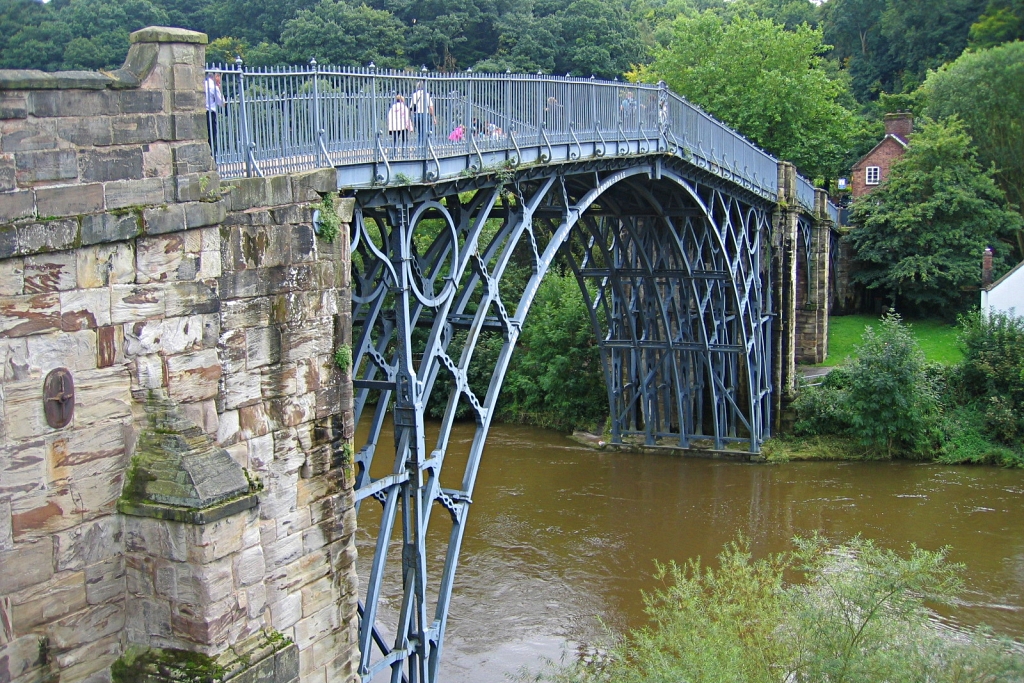 The Iron Bridge © essentially-england.com
The Iron Bridge © essentially-england.comThe River Severn wasn't its serene, peaceful self either, back in the days of the bridge's construction.
Horsedrawn barges loaded with coal, iron ore, and clay, the materials required for the industrial activity in the river and canal side factories, would have made their way to the factories, returning loaded with the goods produced.
The canal network, by then fairly extensive, would have allowed countrywide distribution,
rather than just local. New processes and techniques made mass production of popular products possible, bringing costs down and making what were once luxury items available to an increasing number of buyers.
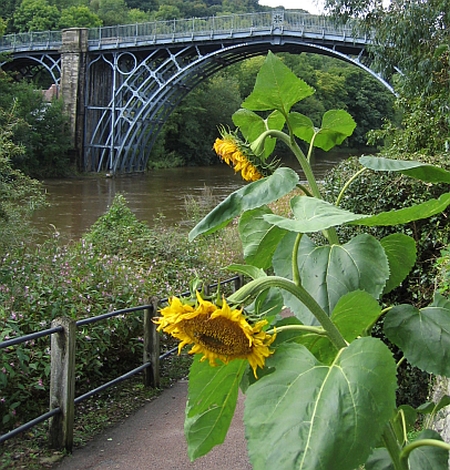 Sunflowers in Ironbridge
Sunflowers in Ironbridge © essentially-england.com
The Iron Bridge
There was also a need to transport materials across the river and at the time the nearest bridge was two miles away. There was a ferry, but it wasn’t easy getting on and off the ferry as the river banks were steep and became very slippery and dangerous when wet. So a bridge was proposed and given Royal Assent in March 1776.
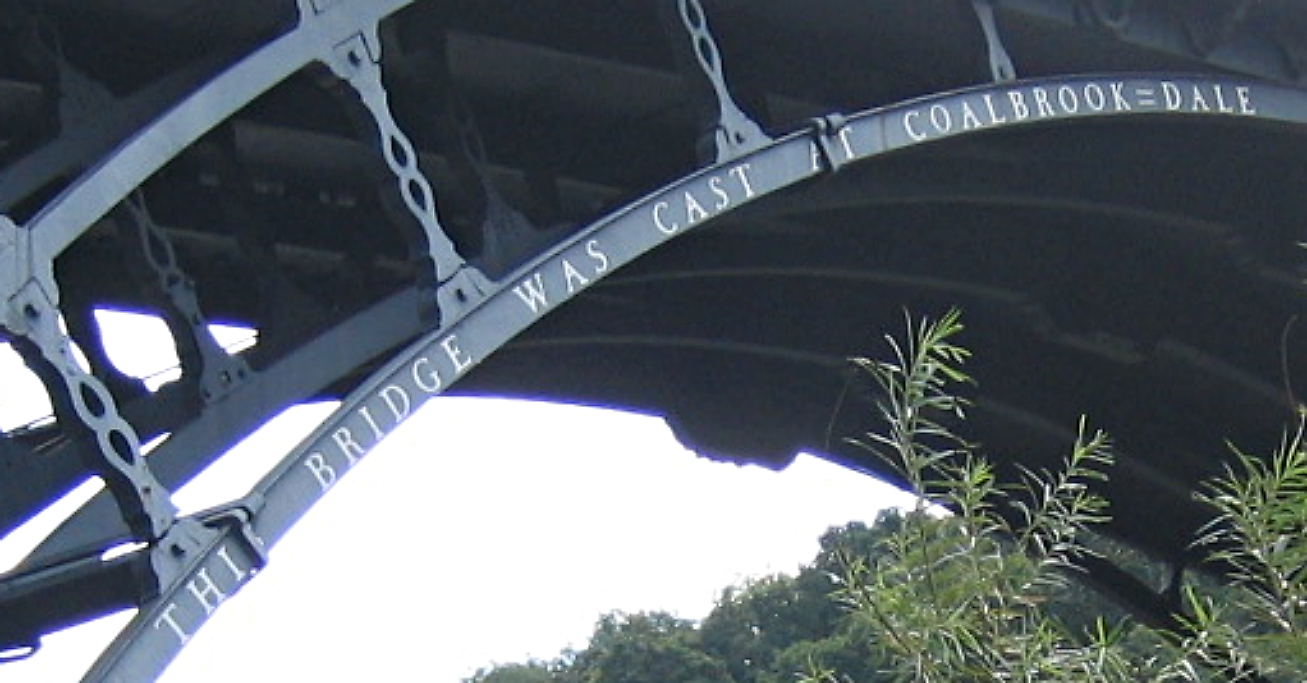 Iron Cast in Coalbrookdale © essentially-england.com
Iron Cast in Coalbrookdale © essentially-england.comIron Bridge was constructed by Abraham Darby III, the greatgrandson of Abraham Darby I, who had developed a new process to make pig iron using coke rather than charcoal in the blast furnace at the Coalbrookdale Iron Works. It was to be the first iron bridge built in the world and consisted of over 1700 cast iron parts made in the local furnaces that would be put together like a giant 378 ton Meccano™ toy.
The bridge builders faced a few challenges: the steep sided gorge suffered from landslides and land movement, and the bridge needed to be a single span and tall enough to allow boats and barges freedom to travel on the river.
The design that was finally chosen was not just a river crossing, but also showed off the skills of the region's ironmasters and helped gain them a competitive edge over their rivals.
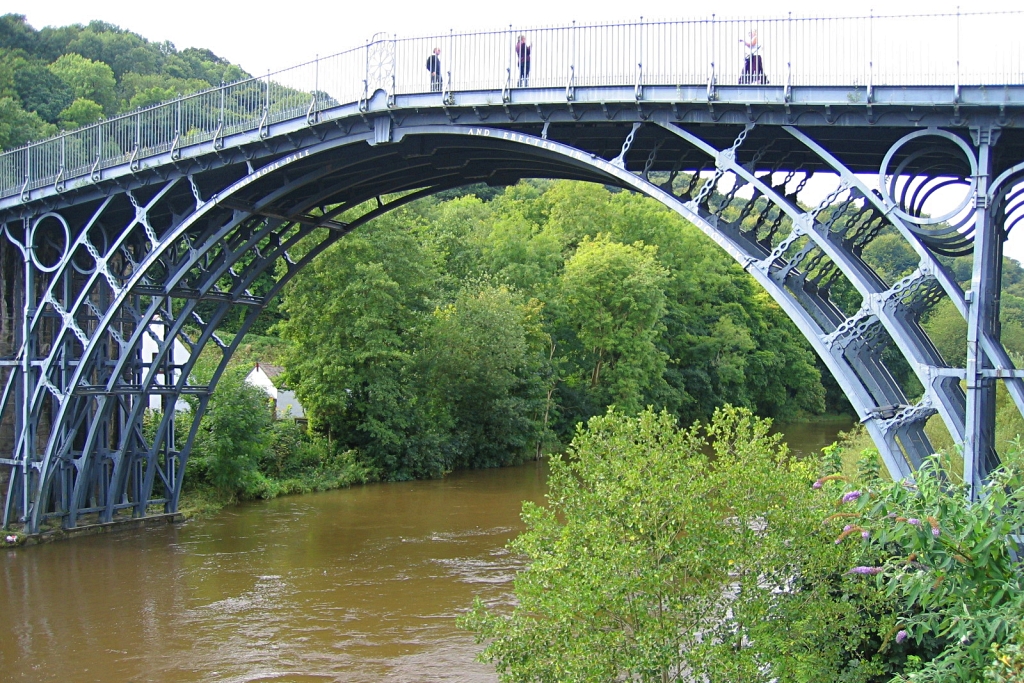 The Iron Bridge © essentially-england.com
The Iron Bridge © essentially-england.comThe bridge was opened on January 1st 1781 with people and traffic having to pay tolls to cross.
The investors soon recouped their money even though the construction costs were around double the initial estimate of £3000.
The original toll house is still in position and is used as a small museum and information centre.
Iron Bridge wouldn’t have survived without some care and attention and has had small modifications over the years. It survived the great floods of 1795, when the next nearest bridge, two miles away in Buildwas, was destroyed. You do not have to guess too hard on what material they used for the re-construction of the Buildwas bridge.
The great flood and survival of the bridge built confidence in iron as a building material and it led to many bridges and buildings being crafted using iron. Perhaps one of the most iconic cast iron buildings was the Crystal Palace used for the 1851 Great Exhibition in Hyde Park, London.
Most of the problems the bridge has seen over the years were caused by the unstable river banks. The stone abutments moved, pushed together, and cracked the iron, leading to a number of improvements. The last was made in 1973, when a reinforced concrete pillar was placed across the river bed to brace the abutments and stop them moving towards one and other.
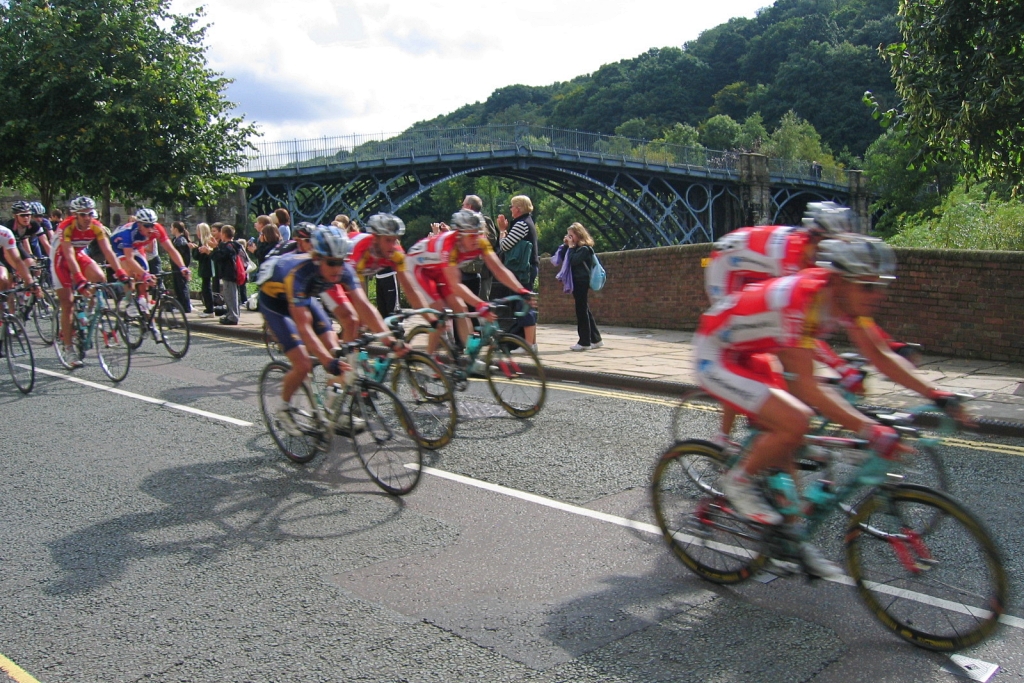 The Tour of Britain Cycle Race Flashes Through Ironbridge © essentially-england.com
The Tour of Britain Cycle Race Flashes Through Ironbridge © essentially-england.comFor 153 years Iron Bridge carried traffic and people across the River Severn, until in 1934, it was closed to traffic and designated an Ancient Monument. It is still open for pedestrian access, though, and when you cross over it, stop for a moment and watch the river flow beneath you.
You'll probably wonder why and how such
an industrious place declined, but you'll also appreciate how much nature has recovered from the ravages of industry to create such a peaceful spot.
If you would like more information on Iron Bridge please visit the Ironbridge Gorge World Heritage Site website here or the English Heritage website here.
Are You Planning a Trip to Shropshire?
Shropshire is a marvellous place for history and food lovers! There's so much to see and do and taste, that you'll need more than just a short visit. If food is your thing, head to Ludlow and start exploring from there. For history lovers, Shrewsbury makes a great base with many historical sites in very easy reach.
Where You Could Stay
To see more self-catering cottages in Shropshire click here or check out holiday cottages in other parts of England by clicking here
Or, if you would prefer, here are some hotels in Shropshire.
What You Could See and Do
Here are a few places that should go on your must-see list:
- Wroxeter Roman City
- Shrewsbury & Shrewsbury Abbey
- Attingham Park
- Lilleshaw Abbey
- Offa's Dyke
- Cantlop Bridge
- Ironbridge Gorge, the Iron Bridge & Broseley Jitties
- Coalbrookdale Iron Museum, Jackfield Tile Museum, and Coalport China Museum
- Ludlow Castle
- Stokesay Castle
- Bridgnorth
Click here for a great list of things to do in Shropshire.
If you enjoyed reading about Iron Bridge and would like to read more about the Ironbridge Gorge World Heritage Site please return here, or if you would like to find out about what to do in Shropshire return here.
